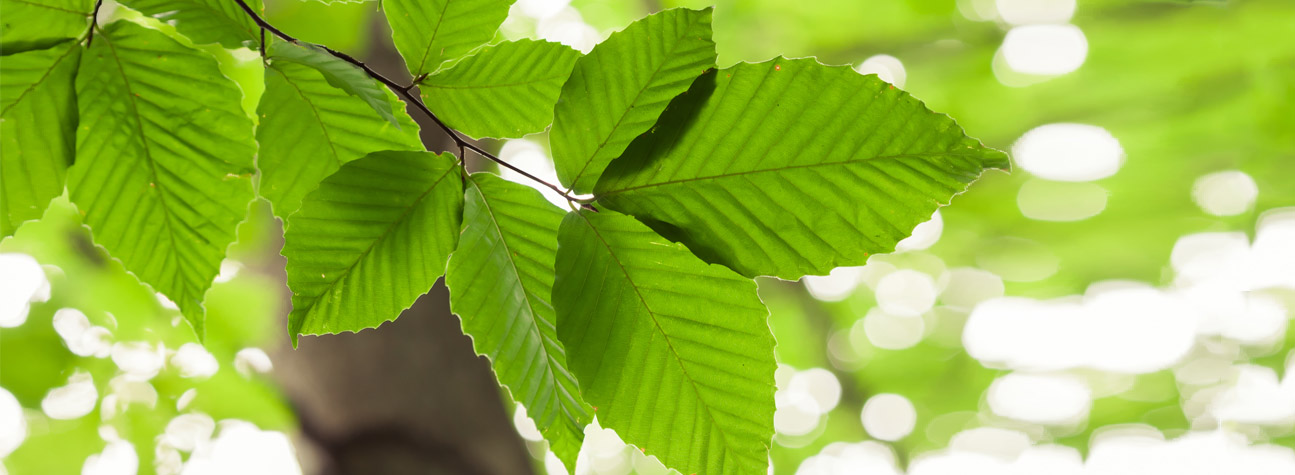Britain’s trees are a familiar feature on our landscape, having graced our countryside for around 400 million years. They provide shelter from the rain, shade from the sun, a home for wildlife, versatile building material and fuel. They also give us oxygen, stabilise the soil and store carbon, not to mention creating a beautiful backdrop.

© Nancy Kennedy / Shutterstock.com
Wildlife haven
Trees provide a home for a multitude of birds and other wildlife, giving your garden its own ecosystem. Leaves, flowers, fruits, buds and bark are used by many different species for food and nesting. Trees also contribute to the overall health of our ecosystems and improve air quality.
It’s easy to identify British trees if you know how. Knowing what species are growing in your garden can help influence your planting ideas for the future, so you get a good mix.
Ash
Ash is one of our most beloved trees and can be found pretty much everywhere. As one of the UK’s most common trees, it grows in many gardens. Light green, oval leaves of up to 40cm long fall when they are still green. Easily recognised in winter by its smooth twigs, with black leaf buds growing opposite each other, in groups of three to six, the bark is pale brown, and fissures develop as the tree ages.
Ash trees can grow to 35 metres tall when they reach maturity and can often be seen growing together to form a leafy canopy.
Apple
The apple tree can also be found in many British gardens, as its fruit is a firm favourite. People have been growing apples for centuries to eat, cook and make cider.
Before the apple tree begins to bear fruit, you can recognise it by its dark green, oval leaves, with serrated edges. The underside of the leaf is slightly furry.
Adorned with five-petalled, white and pink flowers that bloom throughout May and June, when the tree reaches maturity, it can grow to up to 10 metres tall and will produce plenty of green or red fruits.
Beech
Thanks to its majestic, almost monumental appearance, the mighty beech tree is known as the queen of British trees. With long branches that spread upwards to produce a leafy canopy, the beech can grow to a height of more than 40 metres.
The bark is thin and greyish in colour, commonly with horizontal etchings. Leaf buds are reddish-brown and torpedo-shaped when they form on short stalks, with a distinctive criss-cross pattern. The beech tree usually keeps it leaves over winter.
Beech nuts form in prickly four-lobed seed cases.
Silver birch
With drooping branches that form a light canopy, the silver birch has an overall appearance that is pretty and pale, thanks to its silver-white bark. An elegant, medium-sized, deciduous tree, it can grow to 30 metres when mature.
Over time, the white bark sheds its layers and becomes rugged and darker at the base. As the silver birch matures, the bark develops diamond-shaped, darker fissures. Leaves are triangular and the twigs are rough to the touch. The leaves fade to yellow in the autumn.
Planting trees
Whatever species of tree you decide to plant in your garden, it isn’t a difficult job, but in order to get it right, you must remember a few basics. The soil conditions, root health, weather and aftercare will determine their success.
The planting season runs from October to April. Never plant in waterlogged soil, where there is water either on the surface, or at the bottom of the hole you have dug. Don’t plant in soil that’s frozen, when it’s too hard to push your spade in. Bare-root trees and shrubs should be planted immediately if possible, to stop the roots from drying out.
Soil preparation
Plants will not grow where the soil has excessive or insufficient moisture, or where it contains too little air. Loosen the soil to the depth of the roots, over a wide area, to improve drainage and eliminate compaction. If the soil is sandy, incorporate organic matter to improve the quality.
If the soil is generally waterlogged in winter, install better drainage, or plant on a mound around 1ft high and one metre wide. If the sides of the hole are compacted, break up the soil with a fork before planting.
Roots
Soak bare-rooted trees or shrubs for about 30 minutes prior to planting. If the tree or shrub is in a pot, give it a good watering before removing it to put it in the ground. Put the tree in the planting hole so that the first layer of roots are level with the surface of the soil.
If the plant has been grown in a pot, you may need to scrape away the top level of compost to reveal the roots. If you plant it too deeply, it can prevent the air movement that is essential to the root system. This may mean the tree will not establish itself well.
Refill the hole carefully with soil, making sure it’s evenly filled and not packed too tight, or too loose. Initially, you may need to support the sapling tree with a stake, especially if it’s a top-heavy species. Water the tree after you have finished planting it.
Tree care
Always make sure the roots are well-watered until the tree becomes established, as leaving the soil too dry is one of the biggest factors when it comes to poor growth. Fertiliser doesn’t need to be added at planting – do so the following season if the soil isn’t good quality, or if you’re looking for more rapid growth.
If you have staked the tree, inspect the ties in the spring and adjust them to avoid constricting the trunk. After two seasons, you should find the tree is sufficiently well-established to no longer need a stake.
Garden favourites
Many of us will struggle to find the space for some of the bigger trees, but here in the UK, we have a penchant for some of the smaller varieties.
Although they can range quite vastly in size, the cherry tree is a firm favourite in the Great British garden. Variants that produce small tart cherries tend to be the ornamental trees that are valued for their gorgeous flowers in early spring.
The weeping willow is steeped in folklore – the words ‘witch’ and ‘wicked’ are derived from the same word as ‘willow’. These trees look positively idyllic in a waterside setting.
To bring some colour to the winter garden, the holly tree is a firm favourite. Bright red berries and rich dark green foliage can make the winter garden seem positively magical.
As a welcome sign that spring has well and truly sprung, the hawthorn is a profusion of beautiful white flowers in May.
Enjoy your garden all year long!
Enjoy your garden to the fullest, even in the colder snap, thanks to Slide or Fold’s bi-fold doors, which create a seamless link between your home’s interior and the garden.
Please contact us for further details of our high quality fenestration products and services. Go on, treat yourself!


Leave A Comment